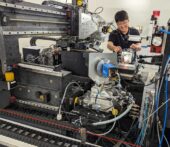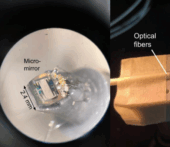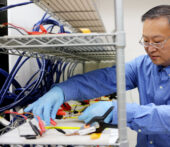
08/07/2025
Piecing together the lightweight alloy’s complex mechanical properties moves towards use in cars to extend fuel economy.

Piecing together the lightweight alloy’s complex mechanical properties moves towards use in cars to extend fuel economy.

The center will focus on the development of microsystem-based optical imaging technologies with ME professors Kenn Oldham and Thomas Wang as principal investigators.

A team of researchers from U-M was recently named a recipient of UL Research Institutes’ inaugural Discoveries in Safety Science Grants program, for work on a robotic gas sensing system for battery safety in energy storage systems.

Robert Chisena graduated from U-M with his PhD in Mechanical Engineering in 2019. Since then, he’s been helping to revolutionize the treatment of cardiovascular disease through Amplitude Vascular Systems (AVS), a start-up he co-founded during his time in ME.

Quasicrystals couldn’t be simulated with quantum mechanics because of their irregular atomic patterns. A new method overcomes this challenge.

A new technology developed by U-M Mechanical Engineers offers hope for those who get carsick.

Going beyond driving or tele-operating single vehicles, an up-to-date digital environment is needed to help humans operate fleets of autonomous vehicles.

A new design makes a technique for studying metals, ceramics and rocks available in a standard laboratory, expanding access for students, academic researchers and industry.

U-M Mechanical Engineers received an ARPA-E award totaling nearly $3 million to develop an approach that combines physics-based modeling and machine learning to rapidly and accurately determine the state of health and remaining useful life of battery cells.

A modified manufacturing process for electric vehicle batteries, developed by University of Michigan engineers, could enable high ranges and fast charging in cold weather, solving problems that are turning potential EV buyers away.